Seaweeds of the South African South Coast


Order Ceramiales
Family Rhodomelaceae
Bostrychia simpliciuscula Harvey ex J.Agardh 1863: 854-855
Plants forming dense turfs to about 1 cm tall, brownish-red; branched prostrate axes bearing upright laterals at irregular intervals, simple or branched for 1-2 orders. Attachment by peripherohaptera (rhizoidal haptera arising in clusters from pericentral cells) originating near origins of upright branches. Apices straight or slightly curved. Pericentral cells (4-?) 5, dividing into 2 tiers, entirely ecorticate; polysiphonous or sometimes with apices of determinate laterals monosiphonous for up to 15 cells, arising at intervals of 2- 4 axial cells. Indeterminate axes 70- 120 µm in diameter, monosiphonous apices about 40 µm in diameter.
Tetrasporangial stichidia subapical or intercalary, 140-200 µm in diameter, 500-1500 µm long with 4 pericentral cells and tetrasporangia per whorl; tetrasporangia 40-60 µm in diameter, with 3 cover cells.
Collections, ecology and regional distribution
Our only record (BOL 143201) is from Mtakatye Estuary, Hluleka (45) as B. tenuis f. simpliciuscula (Bolton & Stegenga 1987), where it was epiphytic on mangroves.
World distribution: Recorded fairly widely from the tropical Pacific, and also from Ghana, Nigeria, and Eritrea (Guiry & Guiry 2010).
Type locality: Tonga (Silva et al. 1996).
Note: While our material generally fits the description of B. simpliciusculus, it is slightly smaller in vegetative dimensions, and has very few monosiphonous laterals. However, Zuccarello & West (2006) do not consider the presence or absence of monosiphonous laterals useful for distinguishing species in this subfamily (Bostrychioideae). This South African entity needs molecular studies.
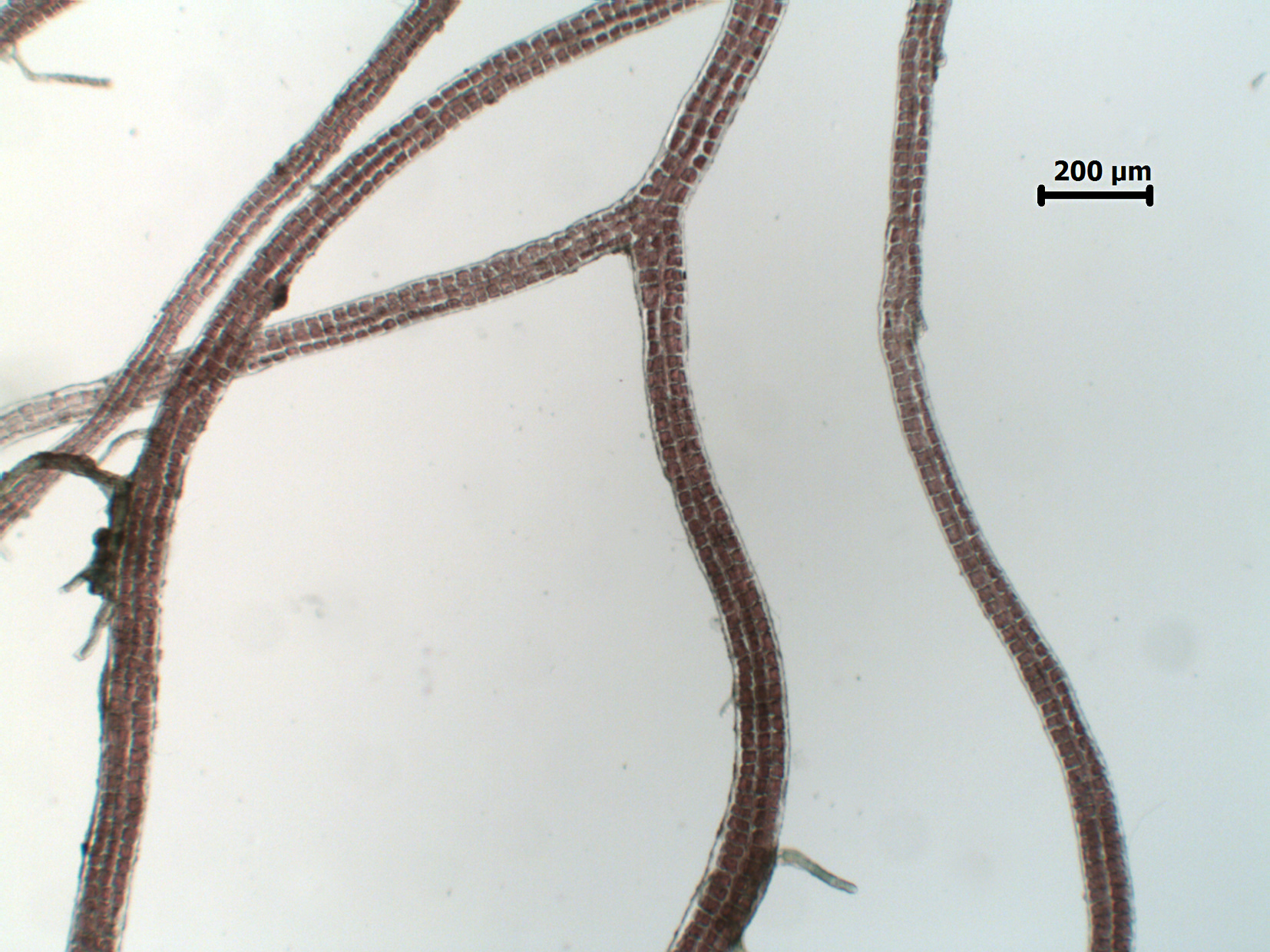
Bostrychia simpliciuscula, re-hydrated material under dissecting microscope (BOL 143201).
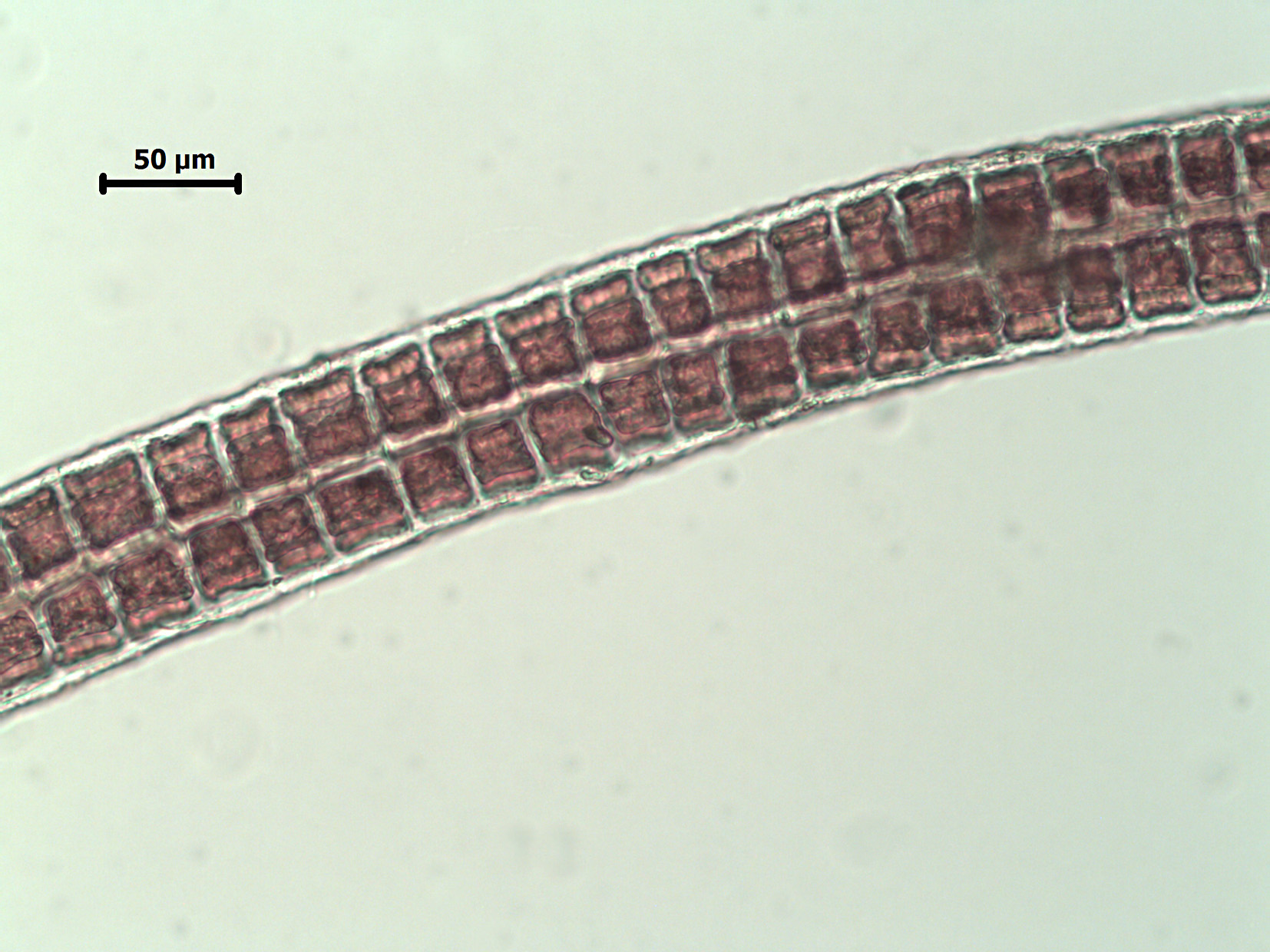
Bostrychia simpliciuscula, vegetative axis, re-hydrated material (BOL 143201).
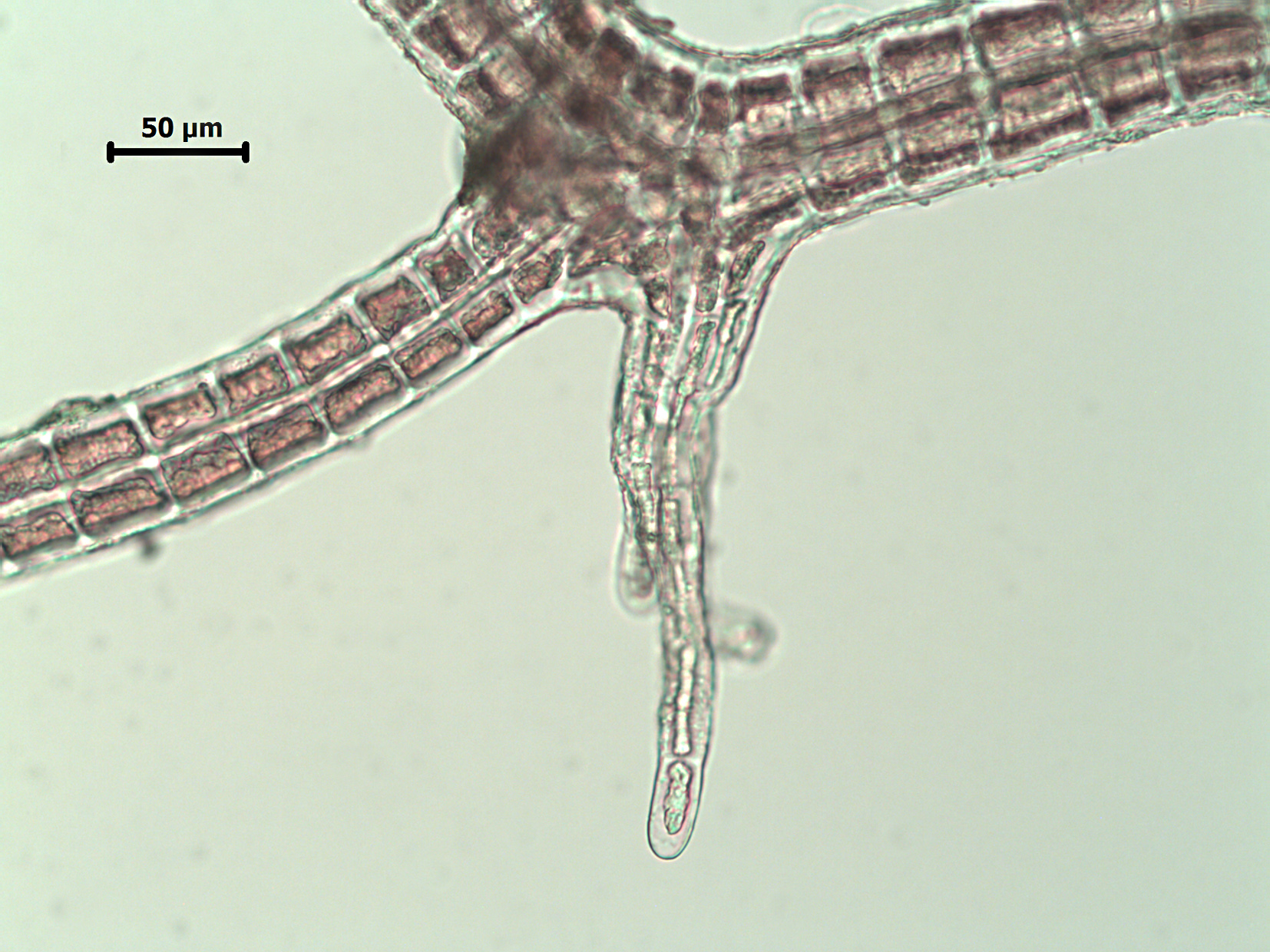
Bostrychia simpliciuscula, junction of prostrate and upright axes, showing peripherohaptera, re-hydrated material (BOL 143201).
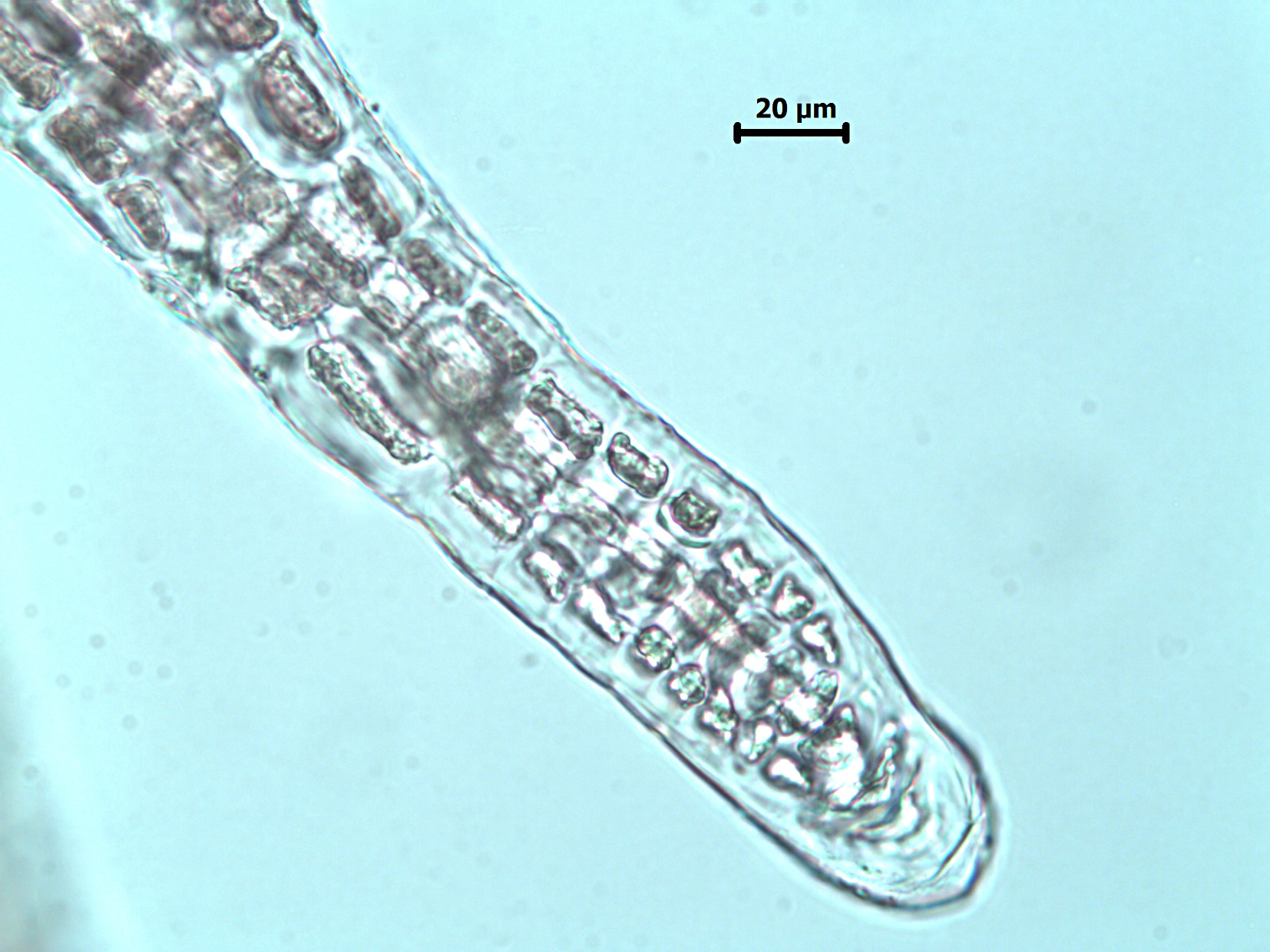
Bostrychia simpliciuscula, tip of indeterminate lateral showing polysiphony immediately behind axial cell.
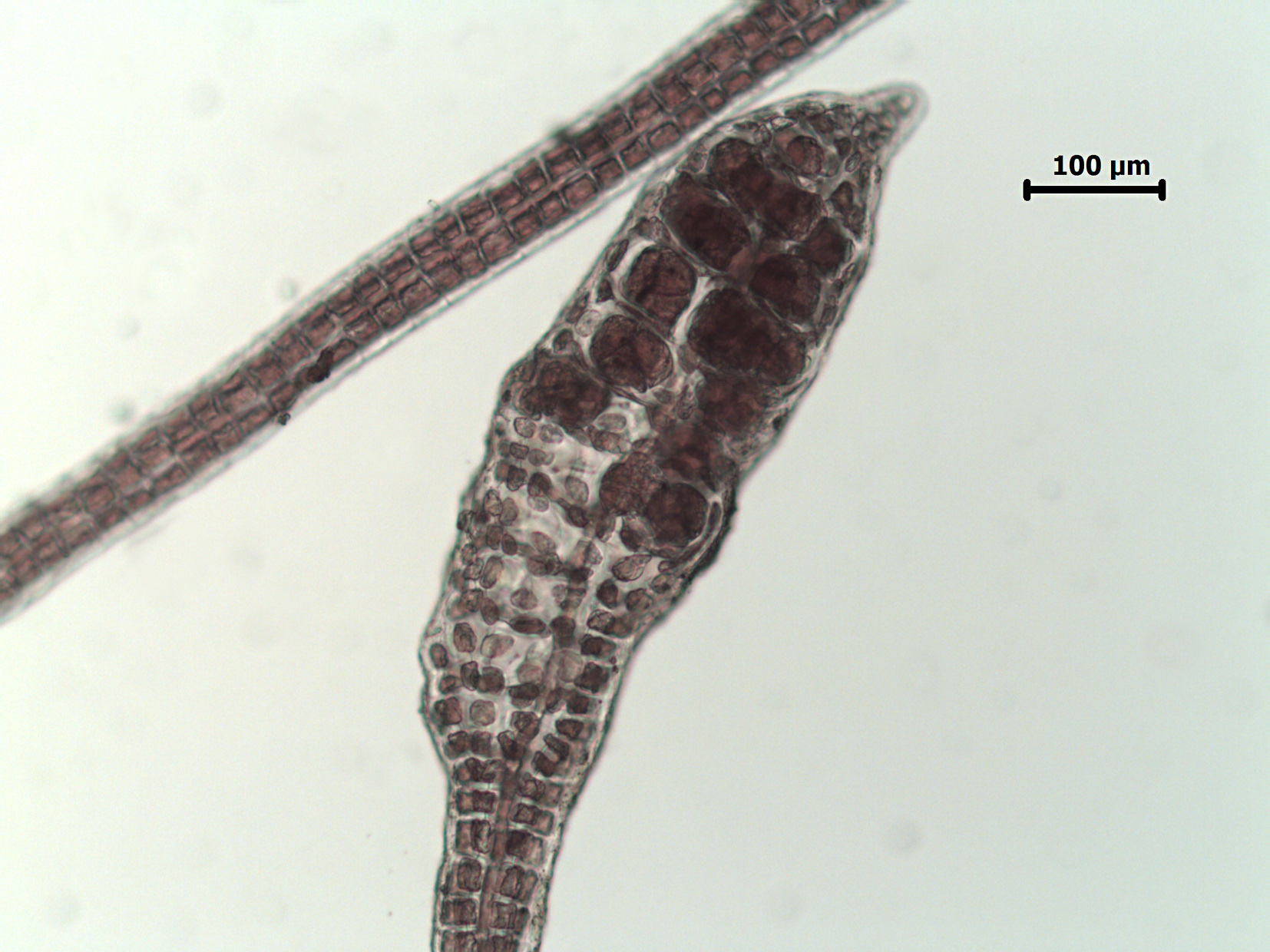
Bostrychia simpliciuscula, tetrasporangial stichidium, re-hydrated material (BOL 143201).
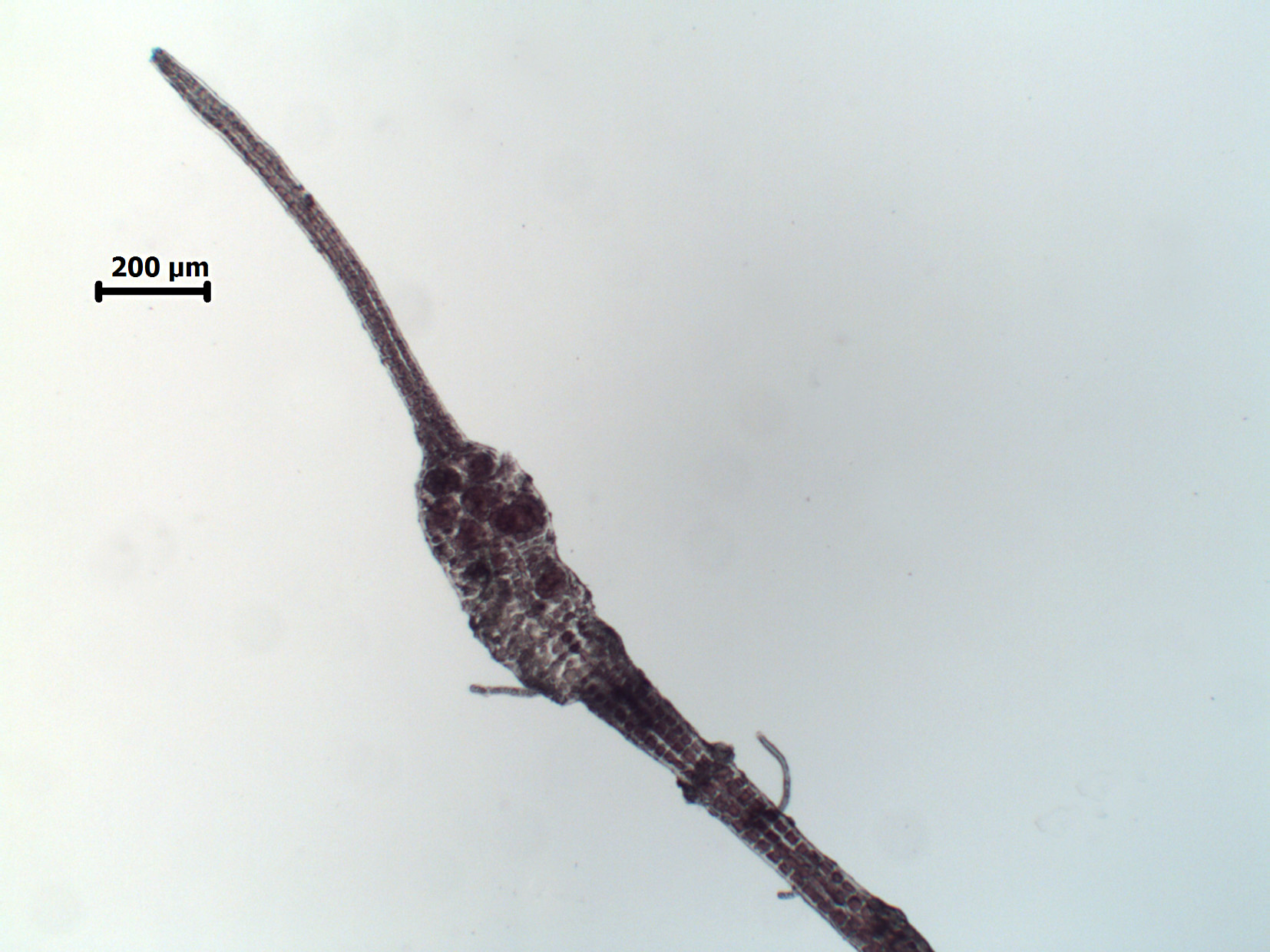
Bostrychia simpliciuscula, tetrasporangial stichidium in subapical/intercalary position.
References Bostrychia simpliciuscula
Agardh, J.G. 1863. Species genera et ordines algarum, seu descriptiones succinctae specierum, generum et ordinum, quibus algarum regnum constituitur. Volumen secundum: algas florideas complectens. Part 2, fasc. 3. pp. 787-1138, 1158-1291. Lundae [Lund]: C.W.K. Gleerup.
Bolton. J. J. & H. Stegenga. 1987. The marine algae of Hluleka (Transkei) and the warm temperate/sub-tropical transition on the east coast of southern Africa. Helgoländer Meeresuntersuchungen 41: 165-183.
Guiry, M.D. & Guiry, G.M. 2010. AlgaeBase. World-wide electronic publication, National University of Ireland, Galway. http://www.algaebase.org; searched October 2010.
Silva, P.C., Basson, P.W. & Moe, R.L. 1996. Catalogue of the benthic marine algae of the Indian Ocean. University of California Publications in Botany 79: 1-1259.
Zuccarello, G.C. & West, J.A. 2006. Molecular phylogeny of the subfamily Bostrychioideae (Ceramiales, Rhodophyta):subsuming Stictosiphonia and highlighting polyphyly in species of Bostrychia. Phycologia 45: 24-36.
Cite this record as:
Anderson RJ, Stegenga H, Bolton JJ. 2016. Seaweeds of the South African South Coast.
World Wide Web electronic publication, University of Cape Town, http://southafrseaweeds.uct.ac.za; Accessed on 07 January 2026.